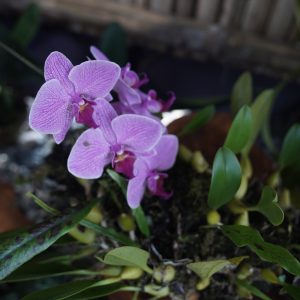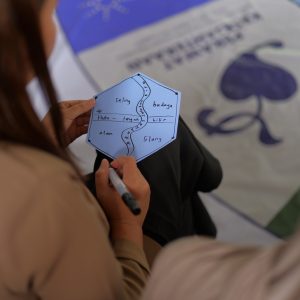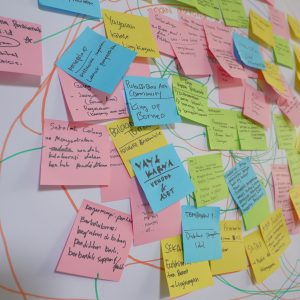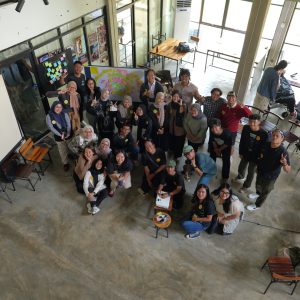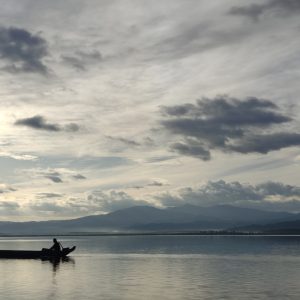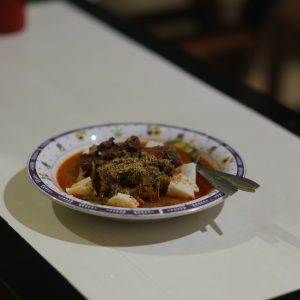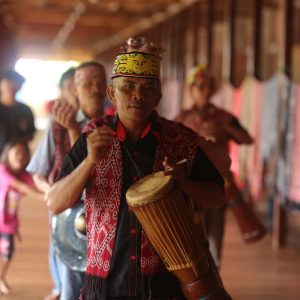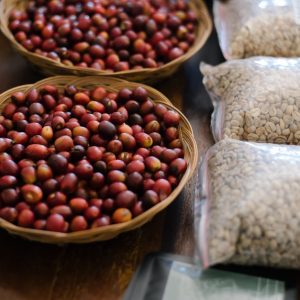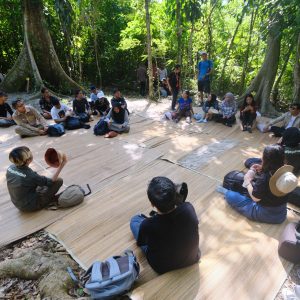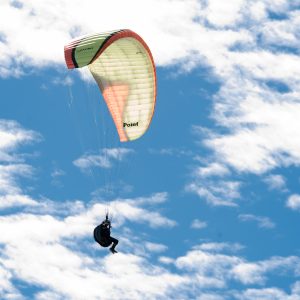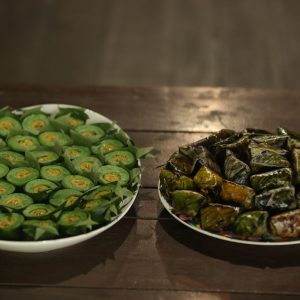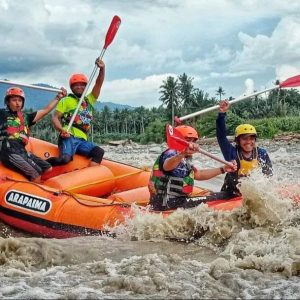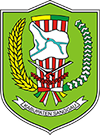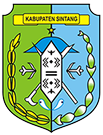Sintang, August 18, 2025 – In many regions across Asia, food is not just a matter of taste, it is a legacy, an identity, and a reflection of the relationship between humans and nature. Especially in Southeast Asia, the wealth of spices and traditional cooking techniques, passed down from one generation to the next, grows from the abundant local food sources: forest, field, ricefield, and river. A region’s local food serves as an enticing entrance to explore the long traces of local wisdom while delving into the sustainable food ecosystem and its balance. However, climate change and nature exploitation have now threatened the sustainable availability of these local food sources.
Based on FAO data in 2025, more than 500 million smallholder farmers, who produced 80% of the world’s food stock, have become the most vulnerable group affected by climate change. It is predicted that, in 2050, famine will occur due to declining food crops or the failure of food crops. It is a true crisis taking shape as the increase in the global temperature and changing seasonal patterns have disrupted staple food crops such as rice, grain, and corn.
Amid this global vulnerability, Indonesia has a great opportunity to build a stronger food system through the conservation of local practices proven to be adaptive to natural changes. West Kalimantan, with its tropical rainforest rich in biodiversity, harbors immense potential in establishing a regenerative food ecosystem. In this region, generational knowledge about cultivation, forest farming, and natural food processing has guided the people. By way of tradition, the practice contributes to shaping the foundation of sustainable food resilience.
Nevertheless, cultural and social shifts today have influenced the public’s low awareness of conserving nature and managing food sources in sustainable ways. Forest conversion to industrial interests drives changes in people’s consumption patterns, which eventually erodes their knowledge of natural resources for their welfare.
The Sintang Regency, as part of West Kalimantan, has immense potential in local food sources. The Agricultural and Plantation Office of Sintang’s Renstra (Strategic Planning) of 2021–2026 has determined the extent of food crop areas’ spatial pattern in the regency for sustainable agriculture, which amounts to 2,163,500 ha, or approximately 3.7 times the island of Bali or more than 3 times Brunei Darussalam. It is necessary to enhance public awareness of the abundant potential that can play a vital role in the regional sustainable development and ensure the public welfare without jeopardizing environmental conservation.
Nature as an Anchor for the Cultural Legacy of the Dayak Desa Tribe
Considering the urgency of local food sustainability as one of today’s challenges, it is necessary to address it through a collective effort in raising public awareness of the importance of their region’s abundance of natural resources. To support this effort, Lingkar Temu Kabupaten Lestari (LTKL), together with two youth centers in Sintang and Sanggau, West Kalimantan, has organized ExploNation, a part of the build-up program to Festival Lestari 2026. It invited content creators to explore natural and cultural wealth while highlighting the relationship between local cultures and natural conservation. For its first series, ExploNation has collaborated with three content creators and youth communities in Sanggau and Sintang to have a closer look at indigenous communities’ restoration practices in Sintang, West Kalimantan.
A content creator and food activist involved in this series of ExploNation is La Ode, a Top Ten contestant of the MasterChef Indonesia Season 8. He explored dishes unique to Sintang, which are influenced by the acculturation of three peoples in West Kalimantan: Dayak, Malay, and Chinese. During the course of the journey, La Ode delved deep into Rimba Gupung, tracking the Kapuas River and having discussions with local food activists in Sintang.
“Tracking in Rimba Gupung has been an exciting experience as we found akar bajakah, a plant for direct consumption, which is believed to have efficacy for health. We also harvestedred fern tips, prepared for evening delicacies with the community at Rumah Betang in Ensaid Panjang. This has made me aware of the importance of forest ecosystem sustainability and how the knowledge about roots, leaves, and fruits can always be valuable, allowing for a continuous cultural regeneration,” says La Ode.
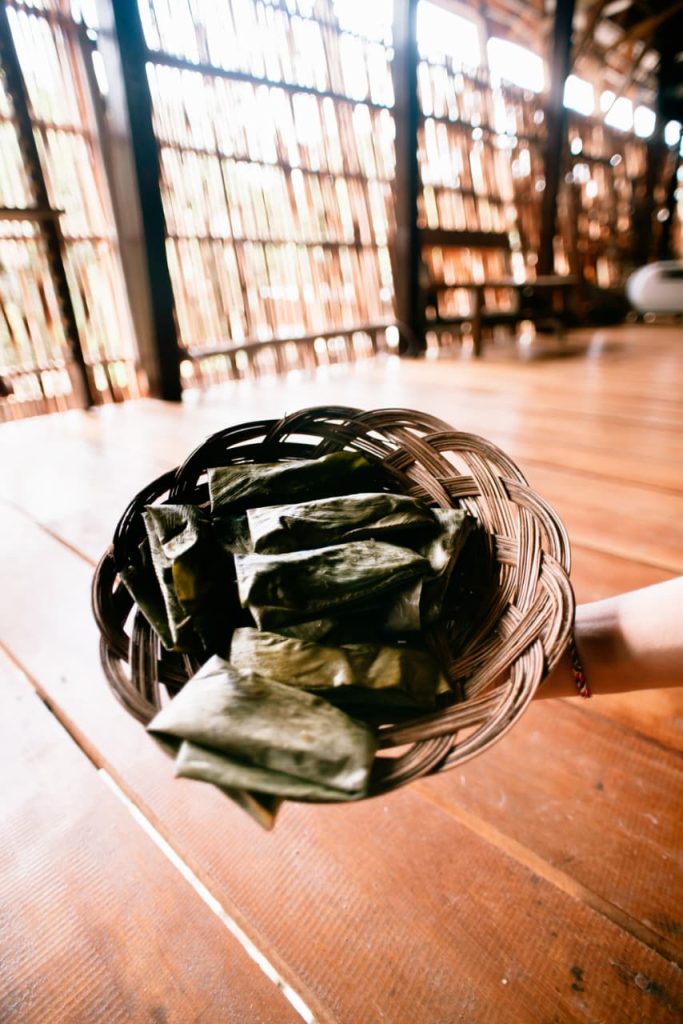
Not only did he explore the surrounding Rimba Gupung, he also had an opportunity to spend nights at Rumah Betang in Ensaid Panjang, a communal living space for around 33 heads of families of the Dayak Desa people. He had discussions and learned about the indigenous daily life there, which goes in harmony with nature. Sharing knowledge about the local food management in Ensaid Panjang took place in a genial atmosphere. La Ode also learned from local women about how to process food materials from the natural “fridge” of Rimba Gupung.
He comments, “An unforgettable experience was how to prepare pekasam (fermented) fish and pounded cassava leaves together with mothers in the village of Ensaid Panjang. I learned a lot about how the effort to safeguard and restore nature is not only crucial for environmental sustainability, but also a great contribution to the culture preserved and passed down for generations. From this process, I realize that local food, coming from our surroundings and prepared based on local wisdom, has a much greater meaning—not only as a dish but also as a cultural identity.” He emphasizes the importance of documentation, archiving, and promotion of Sintang food so that it remains a cultural anchor amid modernization.
Building Capacity to Boost Local Economy
Following the ExploNation agenda, La Ode shared his knowledge in a workshop called “Food Content Taking and Storytelling” for 14 young people of the regencies of Sintang, Sanggau, and Kapuas Hulu. It became their platform for learning and guidance in honingstorytelling skills and developing communication materials based on local culture. It is hoped that these young participants will contribute as local storytellers who support people’s initiatives in West Kalimantan within a restorative economy framework.
The head of the Regional Development Planning Agency (Bappeda) of Sintang Kurniawan remarks, “We truly appreciate the youth’s passion in this activity as a real effort to highlight the natural and cultural wealth of Sintang. This initiative becomes a crucial step in raising awareness of local virtuous culture and its relevance to safeguard and restore the environment for the welfare of the people.”
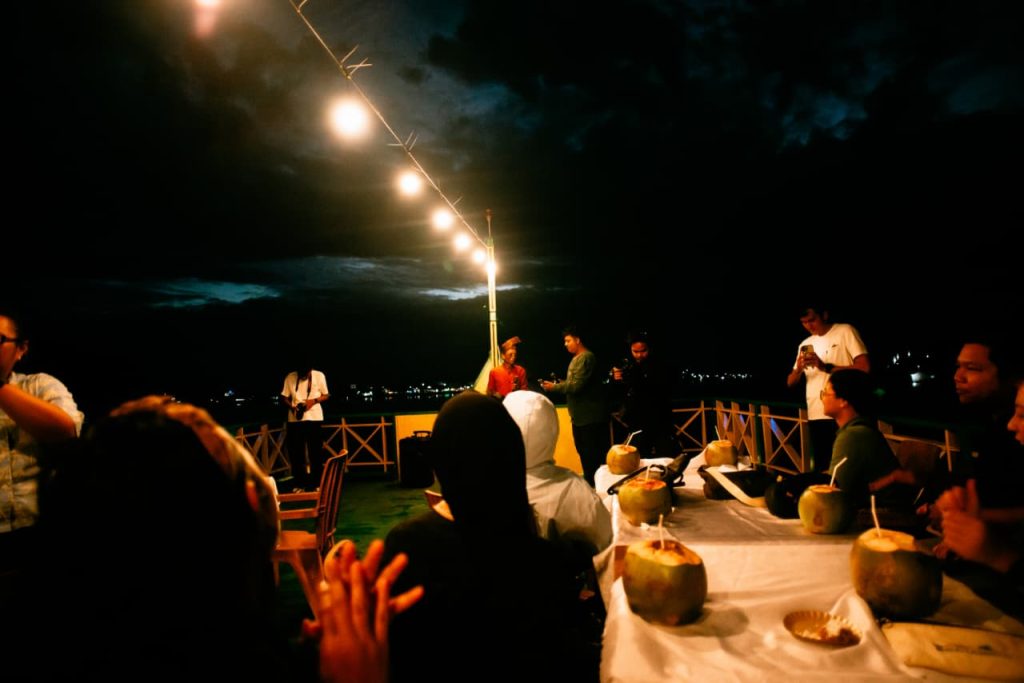
The Sintang local food is proven to contribute a great portion to the creative economy and tourism sector, buttressing the region’s economy. This has been evident in Pameran Ekonomi Kreatif dan Kuliner Sintang 2025 (Sintang Creative Economy and Culinary Expo 2025), which involved 199 entrepreneurs and recorded a total transaction of more than 2 billion rupiahs in a week.
La Ode adds, “Restoring the environment equals restoring our cultural roots. I believe that the future of Sintang food lies in our courage to see nature not as an object of exploitation but as a life source to nurture.”
In line with the ExploNation spirit, La Ode involved local community members to document recipes of the diverse Sintang culinary. This not only serves as an effort to conserve the legacy of Sintang flavor but is also a vital strategy in strengthening food resilience. By encouraging people to appreciate and develop local food materials, this initiative brings forth creative economic opportunities involving farmers and entrepreneurs. The ecosystem as a whole will contribute to the formation of a more independent, diverse, and sustainable food system.
The goal of ExploNation is to spark a wider movement for environmental restoration while highlighting the importance of the restorative economy as a development model to restore nature and care for culture. Through this approach, not only does local food become an essential part of the region’s identity, but it also becomes a sustainable pillar of the economy that ensures the productivity and conservation of natural resources while strengthening the people’s identity and welfare.

